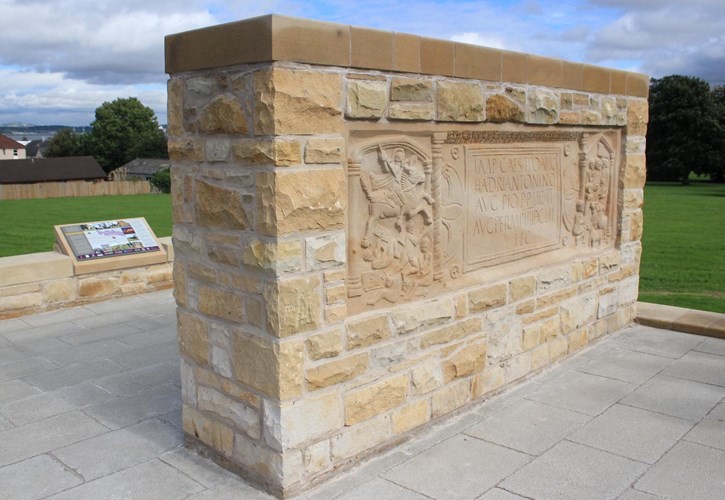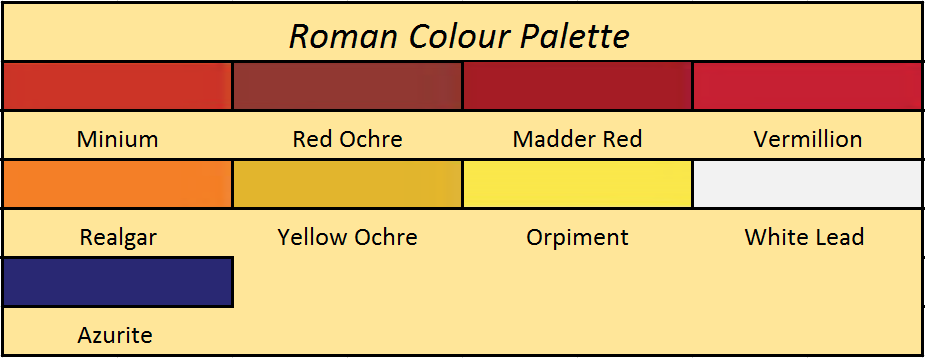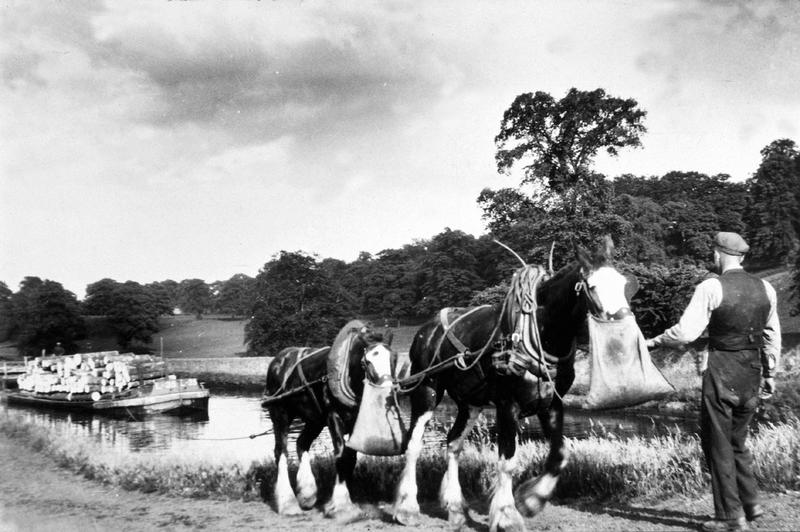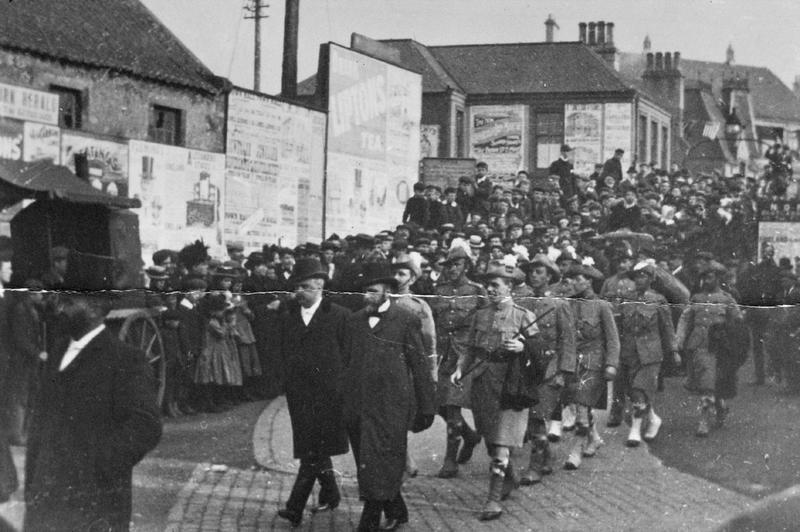The Roman Bridgeness Distance Sculpture, once part of the Antonine wall, have a colourful history which can give us insight into Roman life and trade routes in Falkirk and Britain more widely.
What is the Bridgeness Distance Sculpture?
The Bridgeness Distance Sculpture (also known as a Distance Stone or Distance Slab) is part of a carved sandstone Roman Legionary tablet which dates to around 142 CE. It is one of the most intricate and detailed Roman sculptural tablets to have ever been excavated in Britain, and once formed an important part of the Antonine Wall (National Museum of Scotland, 2020). Distance sculptures were used by Roman legions to commemorate how many feet were built by each legion, and as a dedication to their emperor. The Bridgeness Sculpture’s main panel consists of an inscription in abbreviated Latin which begins by naming the emperor Antonius Pius with all of his official titles, and then goes on to commemorate the Second Legion of Augusta for their role in building 7,722m of the Antonine wall (Campbell, 2020, 99). This panel is flanked by intricate sculptures, both of which provide a fascinating insight into Roman life. On the left-hand side the panel depicts a scene in which a Roman soldier is on horseback chasing down local Britons in a deadly attack, and is a great example of the Roman need to glorify and immortalise their attitudes to warfare (National Museum of Scotland, 2020). The right-hand panel commemorates the religious ritual which would have taken place before the armies entered Scotland and began building the wall. The scene depicts the sacrifice of a pig, a ram, and a bull to Mars, the Roman god of war (National Museum of Scotland, 2020).
The stone was excavated during work on the Caddell estate in 1868 (Falkirk Herald 1868) and is one of the most significant Roman finds in Scotland to date. Before its discovery, there had been debates as to where the Antonine Wall terminated, with areas such as Abercorn, Carriden and Kinneil being suggested (‘Bridgeness’). The discovery of the stone eliminated these theories, and provided solid evidence that the Antonine Wall reached at least as far as Bo’ness. It is a monument that transcends its initial purpose of commemorating the building of the Antonine Wall. In modern times it has broadened our understanding of life on Roman frontiers, Roman attitudes to religion and war, and our knowledge of the Antonine Wall.
Colour on the Bridgeness Stone
Like many things from the ancient world, the surviving stone is lacking in colour and presents itself to us as a carved piece of sandstone which was embedded in the Antonine Wall without further decoration. In the modern world, we tend to view things from the past in a black-white colour scheme and imagine that these objects were always this way. However, recent archaeological research by Dr Louisa Campbell of the University of Glasgow has provided solid evidence of colour pigments on the Bridgeness Stone, and has been able to reconstruct how parts of the sculpture would have looked in Roman times. Using non-invasive technology, Dr Campbell and her team were able to identify three colours on the Bridgeness stone’s left-hand panel. The first is red ochre which was the colour of the Roman soldier’s cloak, the second is minium, which was the colour of the decapitated soldier’s neck, and the third is yellow ochre, which was the colour of the cheeks of the rider and the soldier (Campbell, 2020, 102). Whilst these three colours were all that could be identified on the Bridgeness Sculpture, Dr Campbell and her team carried out their research on a range of Roman distance stones from the Antonine wall and identified pigments such as Madder Red, Realgar, White Lead, and Orpiment (Campbell, 2020, 102). Similar experiments were undertaken on Roman relief sculptures carved on alters from Hadrian’s wall, built in 122 CE by Antonius Pius’s predecessor and adoptive father Hadrian. The results of this produced a palette which contained all of the colours present on the Antonine Wall, with the addition of vermillion and Azurite (Campbell, 2020, 103). While the results of the research did not soundly identify all of these colours on the Bridgeness Sculpture, they have given us a glimpse into the colour palette used by Romans, and it is not unreasonable to assume that the majority of them would once have illuminated the Bridgeness Distance Stone.


Colour as a Window to the Past
While the colours used by the Romans were limited by their access to certain materials, they were also carefully selected to embody meaning through propaganda. Red pigments were powerful tools in Roman propaganda (Campbell, 2019, 11) as they symbolised war and power, so it is no surprise that traces of them have been found on the Bridgeness Sculpture. Use of colour was a statement of power to locals, who although illiterate at this point would be able to view the iconography and colour and derive meaning from it. Understanding what colours are present, then, allows us to view the sculpture through the eyes of local people at that time, and begin to understand the complex network of feelings and information that colour can relay to us. In addition, the colours used to illuminate the stone can provide key information about resources and trade. To create the coloured pigments, the Romans would have to source the minerals and other materials to mix and create their colours. While some of the colours present on the palette outlined about are indicative of locally sourced minerals (Campbell, 2019, 9), there are some which provide key insights into trade routes in Roman Britain. Comparison with distance stones found on Hadrian’s wall show that blue pigments known as Azurite were used to illuminate the sculptures. Azurite forms in low-humidity deserts (King, 2005-2020) and therefore is a material which would have been shipped in from another part of the world. This then begins to build a story of Roman Britain’s trade routes and relationships with other countries.


It is easy to look at the Bridgeness Distance Stone as it stands today, a colourless but magnificent sculptural piece and appreciate that the Romans once inhabited Falkirk. Yet there is something to be said for the impact imagining the stone in all of its colourful glory has on our understanding of Falkirk’s Roman past, and the myriad implications it has on our perception of the Romans themselves.
By Steffany McGeachin, Hidden Heritage Online: Statues and Monuments volunteer 2020.

